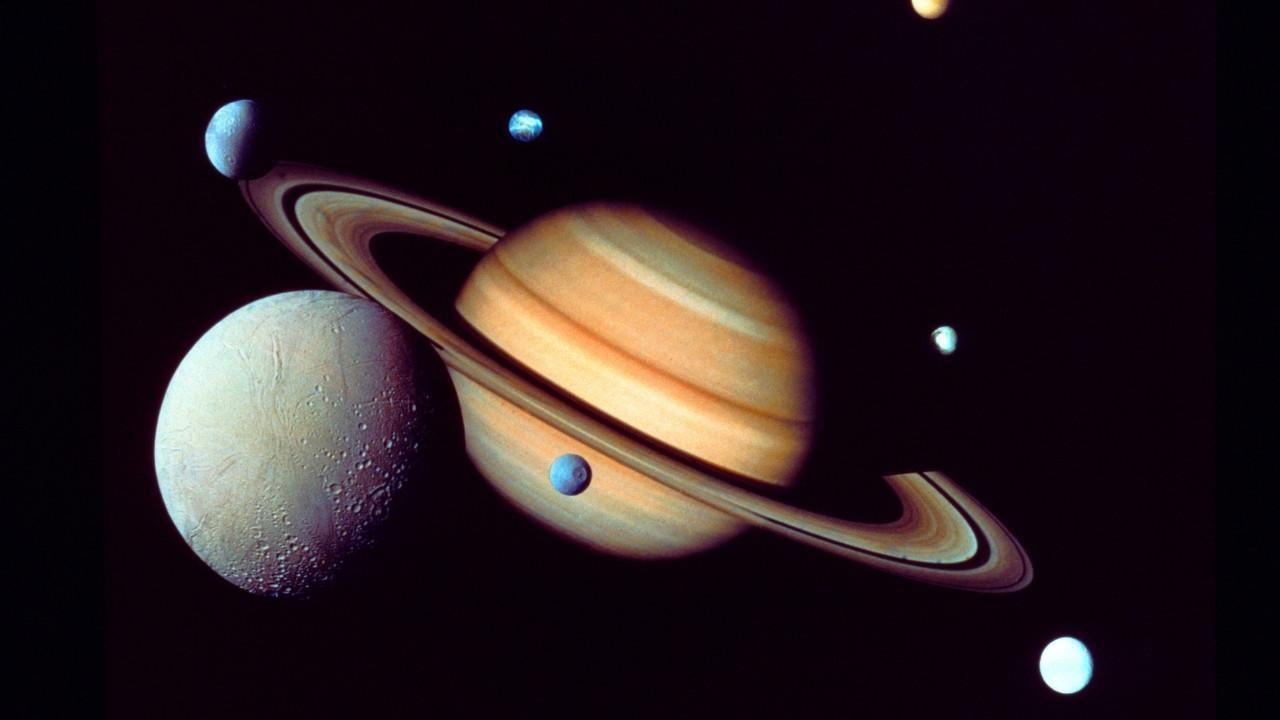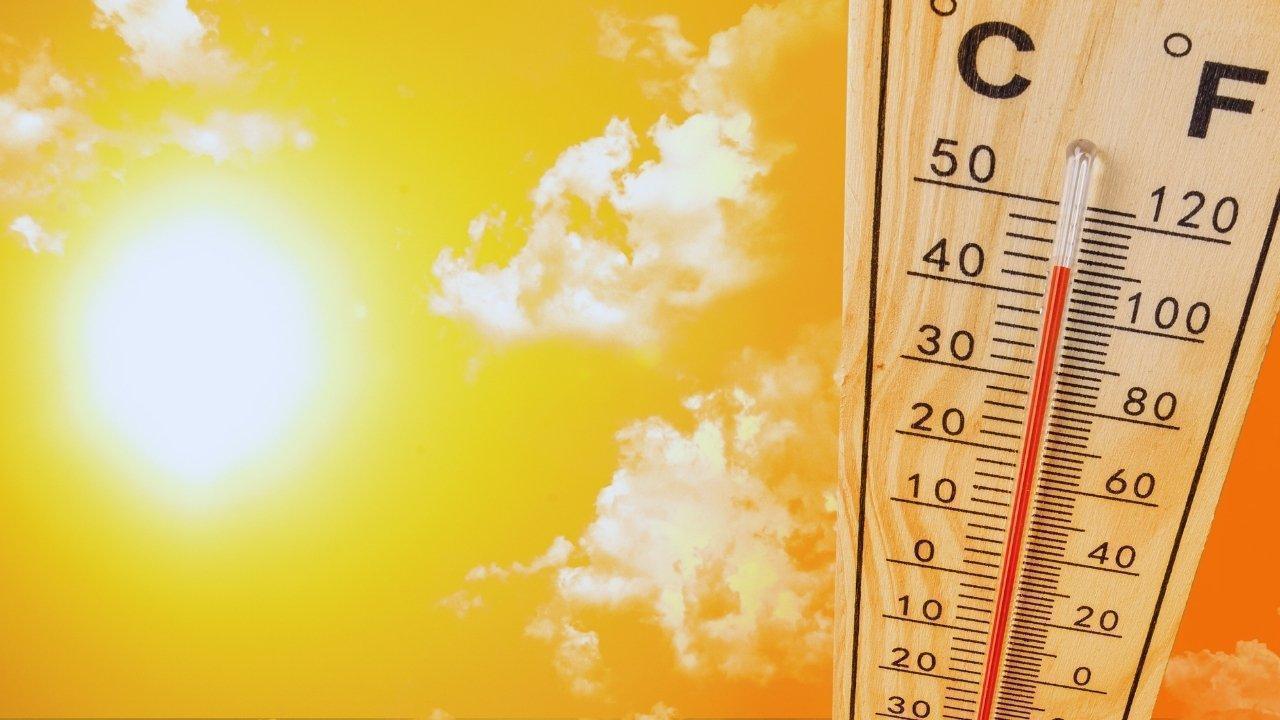
Post by : Anish
In an extraordinary astronomical breakthrough, Saturn has just expanded its cosmic family by 128 newly identified moons, solidifying its status as the planet with the most satellites in our solar system. This discovery not only adds to the allure of the ringed giant but also presents scientists with fresh opportunities to study how moons form, evolve, and interact with their parent planet. The finding underscores how our solar system, even in 2025, continues to surprise humanity with new celestial wonders.
Moons are not just rocks circling planets; they carry vital clues about the history of planetary systems. Each moon can act like a time capsule, holding evidence of how planets formed billions of years ago. With Saturn’s tally now surpassing 180 moons, researchers gain a more detailed laboratory in space to examine cosmic processes. These moons could reveal more about the composition of the solar nebula, the violent collisions that shaped the planets, and even the building blocks of life.
Detecting small moons around a distant giant planet is no easy feat. Astronomers used powerful ground-based telescopes and sophisticated tracking techniques to capture these faint objects against the dark backdrop of space. Advances in imaging technology and data processing have made it possible to identify moons that are only a few kilometers across. Many of these moons orbit far from Saturn, some in irregular, tilted paths that suggest they are captured objects from elsewhere in the solar system.
The growing population of Saturn’s moons forces scientists to rethink the complexity of moon systems. These natural satellites may not have all formed in place. Instead, some could be remnants of ancient collisions or objects gravitationally captured during Saturn’s long history. Studying their distribution, composition, and motion provides deeper insights into planetary evolution and the mechanics of orbital systems. This new discovery paints Saturn not just as a planet, but as a mini solar system in its own right.
For decades, Jupiter reigned as the king of moons. However, with this recent count, Saturn surpasses its gas giant neighbor. The competition between these two celestial giants is not trivial; it reflects the ongoing quest to understand why some planets attract and retain more moons than others. Jupiter, with its massive gravity, has long been the assumed leader. Yet Saturn, aided by its vast rings and extended gravitational reach, seems to be more efficient at capturing stray objects.
Most of the newly found moons are small, irregularly shaped bodies. Unlike the large, spherical moons like Titan—Saturn’s largest—these tiny satellites are more like cosmic debris. They could be captured asteroids or leftover fragments from larger bodies that shattered in violent collisions. Though modest in size, their significance is immense. They provide astronomers with a window into the violent history of the outer solar system, a place where collisions and captures have shaped planetary neighborhoods.
Titan remains Saturn’s most famous moon due to its thick atmosphere and lakes of methane. However, the discovery of so many smaller moons emphasizes that Titan is part of a far more complex system than once thought. These new moons orbit at various distances, creating layers of gravitational interactions that could even affect Titan’s own motion over time. Understanding these dynamics might help explain why moons like Titan remain stable while others are pulled into unstable orbits.
With this discovery, missions to Saturn and its moons gain even greater significance. Future spacecraft may be designed not just to study Titan and Enceladus but to observe these newly discovered bodies as well. Each moon could hold unique characteristics—surface ice, unusual compositions, or orbital quirks—that shed light on broader planetary science questions. As technology advances, astronomers anticipate finding even more moons around Saturn and beyond, pushing the limits of how we define a planetary system.
The solar system has always been more crowded than our ancestors imagined. From dwarf planets to icy bodies at the edges of the Kuiper Belt, discoveries like these moons remind us that our cosmic neighborhood is dynamic and evolving. Every new moon discovered helps refine models of planetary migration, solar system formation, and gravitational interactions. Saturn’s expanding moon family is a reminder that the universe is far from static—it is alive with motion, change, and discovery.
Beyond the scientific community, this news excites people worldwide because it taps into humanity’s sense of wonder. The sheer scale of discovery—128 moons at once—shows that the universe still holds countless mysteries. Such milestones fuel curiosity, inspire young astronomers, and reinforce the importance of investing in space exploration. The more we learn about Saturn and its moons, the closer we get to answering profound questions about our place in the cosmos.
This article is for informational and educational purposes only. The content is based on publicly available scientific data and astronomical research. It should not be considered as professional scientific advice.

Earn Without a Degree? Microcredentials Are Changing the Game
In 2025, microcredentials are reshaping education and employment. As traditional degrees lose their

GCC Honors Sheikha Shamma for Leading UAE Community Work
Sheikha Dr. Shamma bint Mohammed Al Nahyan honored by GCC for her pioneering role in UAE community,

Riyadh Metro Now Starts at 5:30 AM to Serve Early Commuters
Riyadh Metro begins operations at 5:30 AM daily to meet rising demand, reduce car use, ease traffic,

Real Passive Income Ideas That Actually Work in 2025
Passive income has become one of the most sought-after financial goals in 2025. From digital investm

Shabana Mahmood Becomes UK Home Secretary
Shabana Mahmood appointed UK Home Secretary, first Muslim woman of Pakistani origin in history, brin

British Student, 23, Jailed for Life in Dubai Over One Mistake
A 23-year-old British student jailed for life in Dubai after a serious mistake. Her mother shares he

Half the World Endured an Extra Month of Extreme Heat—Here’s What It Means
A new climate report reveals that nearly four billion people experienced an additional month of extr

Voices of UAE: Bouchra Izaabel-Transforming Fertility Care, One Heart and One Story at a Time
Transforming Fertility Care, One Heart and One Story at a Time

Pakistan Defeat UAE by 31 Runs in T20I Tri-Series Clash
Pakistan beat UAE by 31 runs in Sharjah T20I Tri-Series. Saim Ayub hit 69, Hasan Nawaz 56, while Has

Vice President’s Jiu-Jitsu Cup Ends with UAE Clubs Triumph
Sharjah Al Ain Al Jazira and Baniyas clubs shine as champions in the Vice President’s Jiu-Jitsu Cup

Liverpool beat Arsenal City fall to Brighton in EPL drama
Liverpool edge Arsenal with Szoboszlai’s stunning free-kick, while Manchester City suffer second str

Tawfiq wins UAE President’s Cup Arabian Horse Race in Russia
Tawfiq claimed victory at the UAE President’s Cup in Kazan, Russia, thrilling 20,000 fans with a dra

GCC Chief Urges Stronger Push on Global Free Trade Talks
GCC Secretary-General Jasem Albudaiwi pressed negotiators to intensify efforts on free trade pacts b

UAE and India Strengthen Trade Ties with Mumbai Business Talks
UAE Minister of Foreign Trade Dr. Thani Al Zeyoudi met Indian leaders in Mumbai to expand CEPA benef

UAE announces September fuel prices for petrol and diesel
The UAE Fuel Price Committee set September 2024 rates: Super 98 at AED 2.90, Special 95 and Diesel a